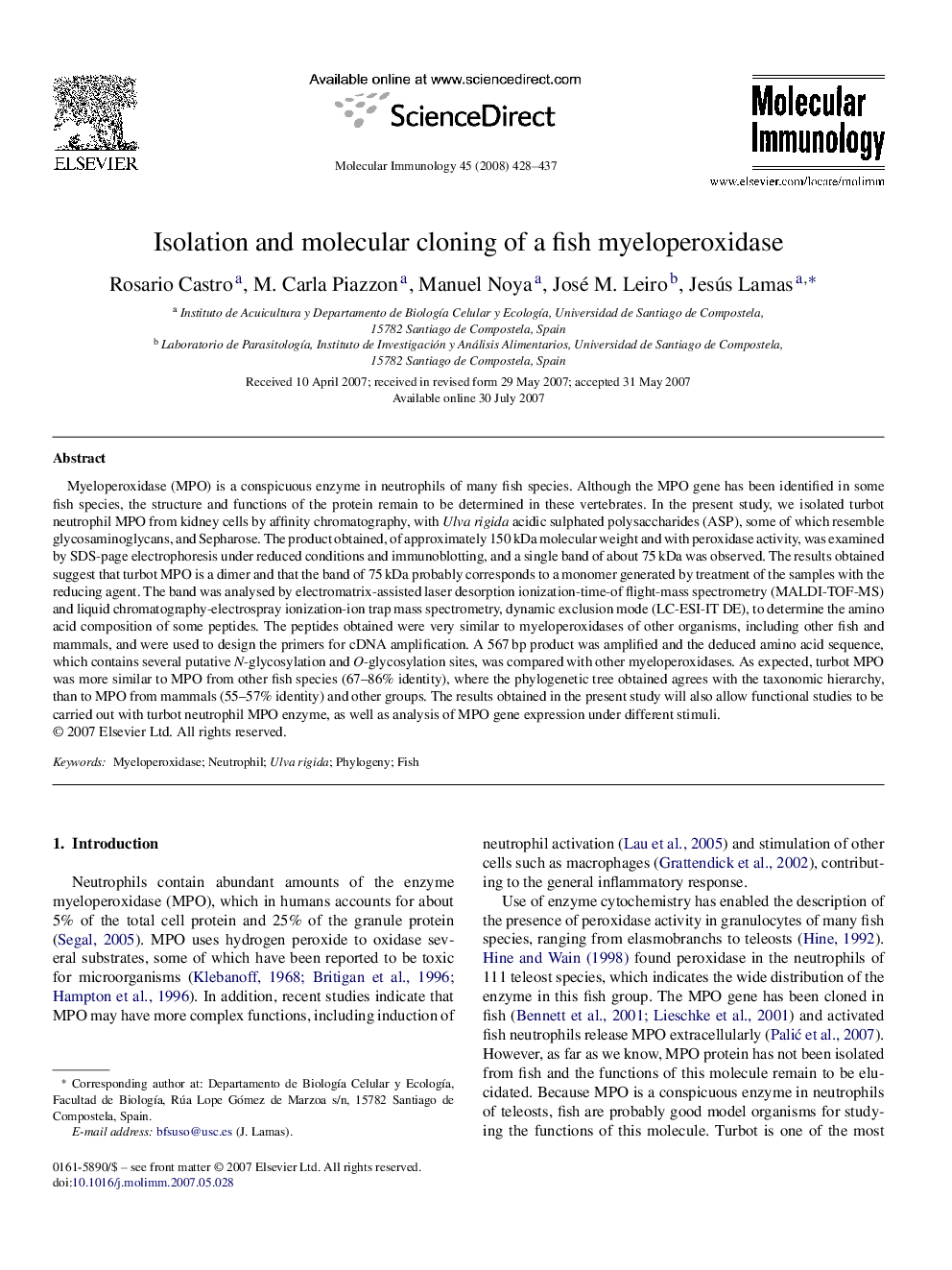| Article ID | Journal | Published Year | Pages | File Type |
|---|---|---|---|---|
| 5918066 | Molecular Immunology | 2008 | 10 Pages |
Myeloperoxidase (MPO) is a conspicuous enzyme in neutrophils of many fish species. Although the MPO gene has been identified in some fish species, the structure and functions of the protein remain to be determined in these vertebrates. In the present study, we isolated turbot neutrophil MPO from kidney cells by affinity chromatography, with Ulva rigida acidic sulphated polysaccharides (ASP), some of which resemble glycosaminoglycans, and Sepharose. The product obtained, of approximately 150Â kDa molecular weight and with peroxidase activity, was examined by SDS-page electrophoresis under reduced conditions and immunoblotting, and a single band of about 75Â kDa was observed. The results obtained suggest that turbot MPO is a dimer and that the band of 75Â kDa probably corresponds to a monomer generated by treatment of the samples with the reducing agent. The band was analysed by electromatrix-assisted laser desorption ionization-time-of flight-mass spectrometry (MALDI-TOF-MS) and liquid chromatography-electrospray ionization-ion trap mass spectrometry, dynamic exclusion mode (LC-ESI-IT DE), to determine the amino acid composition of some peptides. The peptides obtained were very similar to myeloperoxidases of other organisms, including other fish and mammals, and were used to design the primers for cDNA amplification. A 567Â bp product was amplified and the deduced amino acid sequence, which contains several putative N-glycosylation and O-glycosylation sites, was compared with other myeloperoxidases. As expected, turbot MPO was more similar to MPO from other fish species (67-86% identity), where the phylogenetic tree obtained agrees with the taxonomic hierarchy, than to MPO from mammals (55-57% identity) and other groups. The results obtained in the present study will also allow functional studies to be carried out with turbot neutrophil MPO enzyme, as well as analysis of MPO gene expression under different stimuli.
